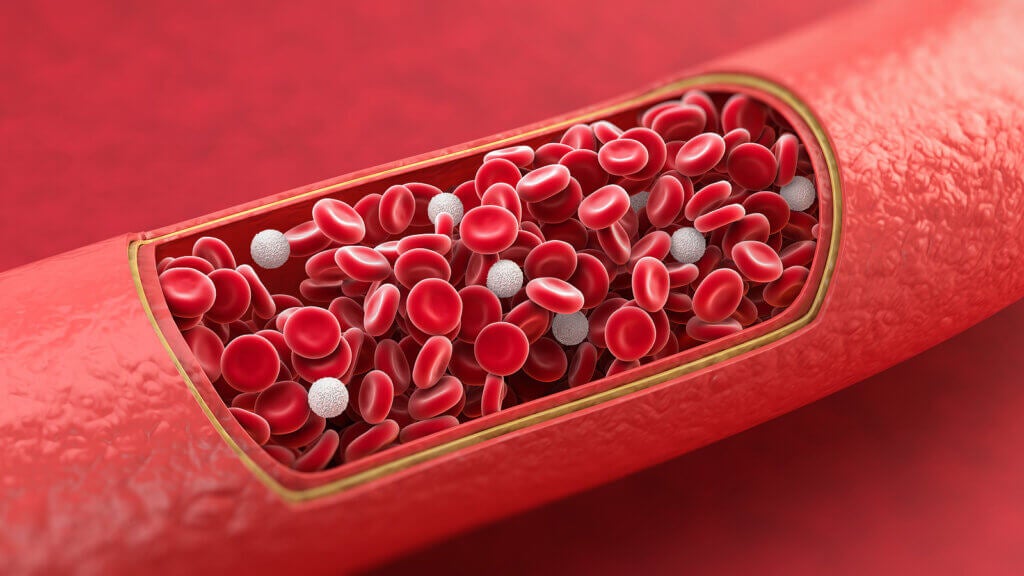Cymbalta: What Is It and What Is it For?


Escrito y verificado por el biólogo Samuel Antonio Sánchez Amador
Cymbalta ® is a drug that contains the active substance duloxetine, an antidepressant inhibitor of the reuptake of serotonin and norepinephrine (SNRI). It’s used for the treatment of depression, although it can also alleviate the pain associated with diabetic neuropathy and fibromyalgia.
Drugs containing duloxetine are generally well tolerated and are considered the first route of choice in many cases. It was approved in 2004 in the United States and the European Union. In 2018, it was the 36th drug group in terms of prescriptions in the United States, with 21 million prescriptions.
Cymbalta ® is one of the brand names for compounds with duloxetine, but it’s also sold under the name Dulvanex ® and as a generic drug.
What is Cymbalta ® used for?
Serotonin is an important chemical in humans, as it’s responsible for regulating the sleep cycle, the mitosis of cell groups, and our biological clock. It also controls sexual activity, neuroendocrine functions, thermonociception, and appetite. Studies postulate that low serotonin levels predispose to depression, but this isn’t entirely clear.
On the other hand, norepinephrine is a hormone and neurotransmitter that influences the fight-or-flight stress response, along with epinephrine. It increases the heart rate, promotes the release of glucose from energy stores, and increases blood flow to skeletal muscle.
Cymbalta ® and the rest of the drugs with duloxetine are responsible for inhibiting the reuptake of serotonin and norepinephrine at a cellular level. This means that they increase the amount of serotonin and norepinephrine available to postsynaptic cells in the brain. Professional sources postulate that they could also increase dopamine transmission.
Approved uses
Here are some of the benefits of the pharmacological mechanism of Cymbalta ®:
- Management of major depressive disorder: Although duloxetine has been shown to be more effective than placebos drugs in treating depression, the same is not true compared to other drugs. It has not been shown to be more effective than selective serotonin reuptake inhibitors (SSRIs), for example.
- Generalized anxiety disorder (GAD): People with this disorder have various symptoms of anxiety for 6 months or more. Cymbalta ® is one of the first drugs used to treat GAD.
- Diabetic neuropathy: A study in the journal PAIN showed that duloxetine could be useful in treating neuropathic pain derived from diabetes.
- Fibromyalgia and chronic pain: The United States Food and Drug Administration (FDA) approved the use of Cymbalta ® to alleviate fibromyalgia in 2008. 2 years later it also began to be used for chronic musculoskeletal pain.
- Stress urinary incontinence: In the United Kingdom this drug has been approved to treat stress urinary incontinence, but in the United States it hasn’t yet been accepted due to lack of evidence.
We want to emphasize that Cymbalta ® is used primarily to treat depression and anxiety, either jointly or separately. It may be useful and prescribed on other fronts, but more research is required.

How is it administered?
This drug comes as a delayed-release oral capsule. It can also be found in 30-milligram or 60-milligram variants.
The concentration of the active principle determines the dosage of the drug in all cases, so keep in mind that the following indications are merely informative. The Statpearls medical portal recommends the use of Cymbalta ® for each case:
- Management of fibromyalgia: This starts with 30 milligrams a day, but the dose can be increased after the first week of treatment to 60 milligrams. In conservative approaches, you can start with 20 milligrams a day.
- Generalized anxiety disorder (GAD): Treatment can be started directly with 60 milligrams a day, although the psychiatrist may opt for a lower dose.
- Major depressive disorder: 40 to 60 milligrams a day, divided into one or two doses. In special cases, you can start with 30 milligrams/day and go up to 60.
- Pain associated with diabetic peripheral neuropathy: The standard dose is 60 milligrams a day.
- Chronic musculoskeletal pain in the back: This starts at 30 milligrams/day and can work up to 60 after the first week.
- Chronic musculoskeletal discomfort of the joints: The same doses as the previous case.
The dose should be taken at the same time each day, with or without food. However, keep in mind that its effect isn’t immediate. As indicated by the National Library of Medicine, it may take up to 4 weeks for improvement to be noticed.
On the other hand, the patient has to continue with the doses even if they feel fine, as stopping antidepressants suddenly can be harmful.
This tablet should not be chewed or sucked. It must be swallowed with a glass of water, preferably in the morning.
Who should not take Cymbalta ®?
According to the package insert, Cymbalta ® cannot be taken by anyone who is allergic or has shown adverse reactions to duloxetine or any of the drug’s ingredients. Note that each tablet also contains hypromellose, hypromellose acetate succinate, sucrose, sugar spheres, talc, titanium dioxide, and other compounds.
Neither should it be administered to people with severe liver failure, severe kidney failure and in those who are taking – or have taken in the last 14 days – monoamine oxidase inhibitor (MAOI) drugs. Finally, it isn’t prescribed if the patient is already taking another drug with duloxetine.
Cymbalta ® in pregnancy
This drug is in category C when it comes to pregnancy. This means that the risk of fetal malformations cannot be ruled out or confirmed. In animals, harmful fetal effects have been shown, so its prescription is only conceived in pregnant women if it’s strictly necessary.
Lactation
Cymbalta ® is excreted in human milk during lactation. However, the percentage received by the baby is 2.3% of the maternal dose, and values of up to 10% are considered allowed.
It’s necessary to monitor the infant in all cases, but no ill effects are expected if the mother is taking Cymbalta ® and breastfeeding at the same time.
Aging population
According to scientific sources, the use of antidepressants has been associated with hyponatremia – low sodium in the blood – in the aging population. For this reason, exhaustive monitoring must be carried out in this age group.
It is also contraindicated in people with narrow-angle glaucoma, as it can cause pupillary dilation.
What are the possible side effects?
Like all existing drugs, this drug can cause both minor and major side effects. Let’s see the most important ones.
- Very common side effects (more than 1 in 10 patients): Headaches, drowsiness, nausea and dry mouth.
- Common side effects (up to 1 in 10 patients): Loss of appetite, difficulty sleeping, dizziness, reduced sexual desire, blurred vision, tinnitus, palpitations, constipation, diarrhea, increased sweating, muscle pain, and weight loss.
- Uncommon (up to 1 in 100 patients): Throat swelling, hoarseness, suicidal thoughts, muscle spasms, fast heartbeat, liver inflammation, night sweats, difficulty urinating, scrotal pain.
- Rare (up to 1 in 1000 patients): Severe allergic reactions, decreased activity of the thyroid gland, dehydration, glaucoma, liver failure, inflammation of the mouth, and an unusual smell of urine.
It’s especially important to emphasize that some patients may experience suicidal thoughts at the beginning of treatment. This applies to those who have had them before and to young adults. If you feel a desire to harm yourself when you start using Cymbalta ®, don’t hesitate to ask for help.
What happens if I miss a dose?
As we have said in previous lines, it’s best to take the pill every morning.
In case you forget a specific time, you can take it throughout the day without problems. However, if you remember the next day, skip the previous shot and continue with the normal treatment. Never take 2 pills to compensate.
What should you do in case of an overdose?
Each tablet contains 30 to 60 milligrams of the active ingredient, but poisoning has been detected after ingestion of 1000 milligrams or more. Signs of Cymbalta ® poisoning are the following: serotonin syndrome – increased activity of the central nervous system – seizures, coma, drowsiness, syncope, tachycardia, diarrhea and vomiting.
There’s no specific treatment for poisoning by this drug. Still, cyproheptadine and cooling measures may be a consideration if the patient has serotonin syndrome. In severe cases, constant hospital care is required in an intensive care unit.
On a realistic level, it can be said that it is impossible to overdose on Cymbalta ® unless you do it voluntarily. If you’re taking this drug and your suicidal tendencies increase, seek help.

How to store or dispose of this medicine?
You should keep this medicine in its original packaging, in a high place, and out of the reach of children. Store it in a drawer at room temperature, away from direct sunlight and a source of excessive humidity.
If you want to get rid of this medicine, don’t flush it down the toilet or throw it away. Go to a specific medicine disposal point and if you do not know any, contact a customer service number that handles this issue in your country.
Cymbalta ® is not a magic medicine
Cymbalta ® is one of the many antidepressant and anxiolytic medications available to the public. Despite its usefulness, every patient should bear in mind that its effect is neither immediate nor miraculous. You have to wait a month or more before you notice the effects of the drug.
We also emphasize that antidepressants are the containment barrier, but not the only approach to be followed in these cases. The ideal thing is to combine these drugs with continued psychotherapy over time.
Cymbalta ® is a drug that contains the active substance duloxetine, an antidepressant inhibitor of the reuptake of serotonin and norepinephrine (SNRI). It’s used for the treatment of depression, although it can also alleviate the pain associated with diabetic neuropathy and fibromyalgia.
Drugs containing duloxetine are generally well tolerated and are considered the first route of choice in many cases. It was approved in 2004 in the United States and the European Union. In 2018, it was the 36th drug group in terms of prescriptions in the United States, with 21 million prescriptions.
Cymbalta ® is one of the brand names for compounds with duloxetine, but it’s also sold under the name Dulvanex ® and as a generic drug.
What is Cymbalta ® used for?
Serotonin is an important chemical in humans, as it’s responsible for regulating the sleep cycle, the mitosis of cell groups, and our biological clock. It also controls sexual activity, neuroendocrine functions, thermonociception, and appetite. Studies postulate that low serotonin levels predispose to depression, but this isn’t entirely clear.
On the other hand, norepinephrine is a hormone and neurotransmitter that influences the fight-or-flight stress response, along with epinephrine. It increases the heart rate, promotes the release of glucose from energy stores, and increases blood flow to skeletal muscle.
Cymbalta ® and the rest of the drugs with duloxetine are responsible for inhibiting the reuptake of serotonin and norepinephrine at a cellular level. This means that they increase the amount of serotonin and norepinephrine available to postsynaptic cells in the brain. Professional sources postulate that they could also increase dopamine transmission.
Approved uses
Here are some of the benefits of the pharmacological mechanism of Cymbalta ®:
- Management of major depressive disorder: Although duloxetine has been shown to be more effective than placebos drugs in treating depression, the same is not true compared to other drugs. It has not been shown to be more effective than selective serotonin reuptake inhibitors (SSRIs), for example.
- Generalized anxiety disorder (GAD): People with this disorder have various symptoms of anxiety for 6 months or more. Cymbalta ® is one of the first drugs used to treat GAD.
- Diabetic neuropathy: A study in the journal PAIN showed that duloxetine could be useful in treating neuropathic pain derived from diabetes.
- Fibromyalgia and chronic pain: The United States Food and Drug Administration (FDA) approved the use of Cymbalta ® to alleviate fibromyalgia in 2008. 2 years later it also began to be used for chronic musculoskeletal pain.
- Stress urinary incontinence: In the United Kingdom this drug has been approved to treat stress urinary incontinence, but in the United States it hasn’t yet been accepted due to lack of evidence.
We want to emphasize that Cymbalta ® is used primarily to treat depression and anxiety, either jointly or separately. It may be useful and prescribed on other fronts, but more research is required.

How is it administered?
This drug comes as a delayed-release oral capsule. It can also be found in 30-milligram or 60-milligram variants.
The concentration of the active principle determines the dosage of the drug in all cases, so keep in mind that the following indications are merely informative. The Statpearls medical portal recommends the use of Cymbalta ® for each case:
- Management of fibromyalgia: This starts with 30 milligrams a day, but the dose can be increased after the first week of treatment to 60 milligrams. In conservative approaches, you can start with 20 milligrams a day.
- Generalized anxiety disorder (GAD): Treatment can be started directly with 60 milligrams a day, although the psychiatrist may opt for a lower dose.
- Major depressive disorder: 40 to 60 milligrams a day, divided into one or two doses. In special cases, you can start with 30 milligrams/day and go up to 60.
- Pain associated with diabetic peripheral neuropathy: The standard dose is 60 milligrams a day.
- Chronic musculoskeletal pain in the back: This starts at 30 milligrams/day and can work up to 60 after the first week.
- Chronic musculoskeletal discomfort of the joints: The same doses as the previous case.
The dose should be taken at the same time each day, with or without food. However, keep in mind that its effect isn’t immediate. As indicated by the National Library of Medicine, it may take up to 4 weeks for improvement to be noticed.
On the other hand, the patient has to continue with the doses even if they feel fine, as stopping antidepressants suddenly can be harmful.
This tablet should not be chewed or sucked. It must be swallowed with a glass of water, preferably in the morning.
Who should not take Cymbalta ®?
According to the package insert, Cymbalta ® cannot be taken by anyone who is allergic or has shown adverse reactions to duloxetine or any of the drug’s ingredients. Note that each tablet also contains hypromellose, hypromellose acetate succinate, sucrose, sugar spheres, talc, titanium dioxide, and other compounds.
Neither should it be administered to people with severe liver failure, severe kidney failure and in those who are taking – or have taken in the last 14 days – monoamine oxidase inhibitor (MAOI) drugs. Finally, it isn’t prescribed if the patient is already taking another drug with duloxetine.
Cymbalta ® in pregnancy
This drug is in category C when it comes to pregnancy. This means that the risk of fetal malformations cannot be ruled out or confirmed. In animals, harmful fetal effects have been shown, so its prescription is only conceived in pregnant women if it’s strictly necessary.
Lactation
Cymbalta ® is excreted in human milk during lactation. However, the percentage received by the baby is 2.3% of the maternal dose, and values of up to 10% are considered allowed.
It’s necessary to monitor the infant in all cases, but no ill effects are expected if the mother is taking Cymbalta ® and breastfeeding at the same time.
Aging population
According to scientific sources, the use of antidepressants has been associated with hyponatremia – low sodium in the blood – in the aging population. For this reason, exhaustive monitoring must be carried out in this age group.
It is also contraindicated in people with narrow-angle glaucoma, as it can cause pupillary dilation.
What are the possible side effects?
Like all existing drugs, this drug can cause both minor and major side effects. Let’s see the most important ones.
- Very common side effects (more than 1 in 10 patients): Headaches, drowsiness, nausea and dry mouth.
- Common side effects (up to 1 in 10 patients): Loss of appetite, difficulty sleeping, dizziness, reduced sexual desire, blurred vision, tinnitus, palpitations, constipation, diarrhea, increased sweating, muscle pain, and weight loss.
- Uncommon (up to 1 in 100 patients): Throat swelling, hoarseness, suicidal thoughts, muscle spasms, fast heartbeat, liver inflammation, night sweats, difficulty urinating, scrotal pain.
- Rare (up to 1 in 1000 patients): Severe allergic reactions, decreased activity of the thyroid gland, dehydration, glaucoma, liver failure, inflammation of the mouth, and an unusual smell of urine.
It’s especially important to emphasize that some patients may experience suicidal thoughts at the beginning of treatment. This applies to those who have had them before and to young adults. If you feel a desire to harm yourself when you start using Cymbalta ®, don’t hesitate to ask for help.
What happens if I miss a dose?
As we have said in previous lines, it’s best to take the pill every morning.
In case you forget a specific time, you can take it throughout the day without problems. However, if you remember the next day, skip the previous shot and continue with the normal treatment. Never take 2 pills to compensate.
What should you do in case of an overdose?
Each tablet contains 30 to 60 milligrams of the active ingredient, but poisoning has been detected after ingestion of 1000 milligrams or more. Signs of Cymbalta ® poisoning are the following: serotonin syndrome – increased activity of the central nervous system – seizures, coma, drowsiness, syncope, tachycardia, diarrhea and vomiting.
There’s no specific treatment for poisoning by this drug. Still, cyproheptadine and cooling measures may be a consideration if the patient has serotonin syndrome. In severe cases, constant hospital care is required in an intensive care unit.
On a realistic level, it can be said that it is impossible to overdose on Cymbalta ® unless you do it voluntarily. If you’re taking this drug and your suicidal tendencies increase, seek help.

How to store or dispose of this medicine?
You should keep this medicine in its original packaging, in a high place, and out of the reach of children. Store it in a drawer at room temperature, away from direct sunlight and a source of excessive humidity.
If you want to get rid of this medicine, don’t flush it down the toilet or throw it away. Go to a specific medicine disposal point and if you do not know any, contact a customer service number that handles this issue in your country.
Cymbalta ® is not a magic medicine
Cymbalta ® is one of the many antidepressant and anxiolytic medications available to the public. Despite its usefulness, every patient should bear in mind that its effect is neither immediate nor miraculous. You have to wait a month or more before you notice the effects of the drug.
We also emphasize that antidepressants are the containment barrier, but not the only approach to be followed in these cases. The ideal thing is to combine these drugs with continued psychotherapy over time.
- Cowen, P. J. (2008). Serotonin and depression: pathophysiological mechanism or marketing myth?. Trends in Pharmacological Sciences, 29(9), 433-436.
- Kihara, T., & Ikeda, M. (1995). Effects of duloxetine, a new serotonin and norepinephrine uptake inhibitor, on extracellular monoamine levels in rat frontal cortex. Journal of Pharmacology and Experimental Therapeutics, 272(1), 177-183.
- Goldstein, D. J., Lu, Y., Detke, M. J., Lee, T. C., & Iyengar, S. (2005). Duloxetine vs. placebo in patients with painful diabetic neuropathy. Pain, 116(1-2), 109-118.
- Dhaliwal, J. S., Spurling, B. C., & Molla, M. (2019). Duloxetine.
- Duloxetina, Medlineplus.gov. Recogido a 3 de julio en https://medlineplus.gov/spanish/druginfo/meds/a604030-es.html
- Cymbalta 30 mg, CIMA. Recogido a 3 de julio en https://cima.aemps.es/cima/dochtml/p/04296002/P_042
- 2019 American Geriatrics Society Beers Criteria® Update Expert Panel, Fick, D. M., Semla, T. P., Steinman, M., Beizer, J., Brandt, N., … & Sandhu, S. (2019). American Geriatrics Society 2019 updated AGS Beers Criteria® for potentially inappropriate medication use in older adults. Journal of the American Geriatrics Society, 67(4), 674-694.
Este texto se ofrece únicamente con propósitos informativos y no reemplaza la consulta con un profesional. Ante dudas, consulta a tu especialista.







